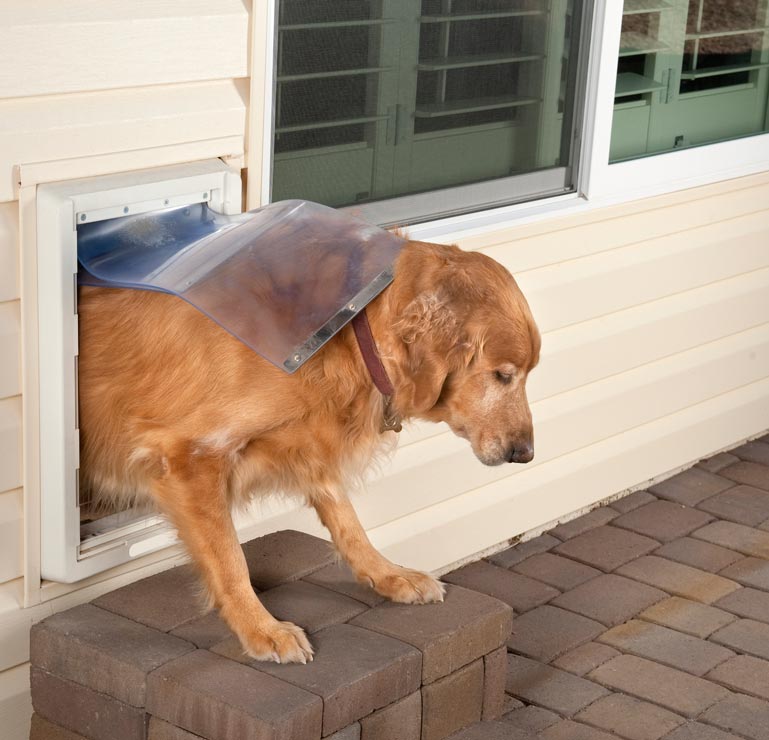Is a Doggie Door Right for Your Home?

A doggie door is a hole with a flap in it that you can install in your own door or wall. It allows your dog to enter and exit the house at will and relieves you of needing to be there to open and close the door.
Look at this information to help you decide whether a doggie door might be right for your household.
Do You Have a Secure Yard?
If you don't have a secure, fenced-in yard into which the doggie door will deposit your dog, a pet door isn't right for you. While you might think your dog would never leave his space, it's impossible to be sure of that if he'll be going out when you aren't there. Additionally, not having a secure space means other animals might get into your yard too, and they could be waiting there to scuffle with your dog when he goes out.
Of course, a fence won't keep all animals out of your yard, but it should at least keep other dogs from sauntering in.
Be sure you don't use toxic fertilizer or insecticide on any area of the yard your dog will have access to because you won't always be there to keep him in the safe, untreated areas.
Is Your Dog Housetrained?
If your dog isn't yet housetrained, installing a doggie door won't likely be a magic solution for you. While your dog might use it to go outside and explore, he is likely to continue to have accidents inside until he completely understands that he shouldn't.
In that case, crate-training is probably a better idea until you get to the point where your dog is reliably eliminating outside. Of course, you can still have a doggie door and get your dog used to using it, but don't rely on it for stopping in-home messes until house-training is completed.
Are You Gone Long Stretches?
If you're not home for long periods, having a doggie door can be a great idea. Your dog can go in and out when he needs to urinate or defecate but not be stuck outside in the elements all day long.
Of course, you'll need to be sure the area is safe as mentioned above. There should be a shelter from sun, wind, and rain in the outdoor space in case your dog decides on his own to spend long periods out there. There should also always be fresh, clean water out there.
Once You Decide on a Doggie Door
Make sure you get the right size door for your dog's size as an adult. Also, choose one that can be secured shut, so your dog can only use it when you want him to.
Once it's installed, you might need to encourage and teach your dog to use it. You can start by pinning the flap up, so your dog can see the other area and understand he can go through to get there.
Once he's reliably going through with the flap up, put it down. You can use a treat tossed through to show him how to do it or stand on the opposite side and peek through, giving him encouragement.
You May Also Like These Articles:
7 Easy Ways to Keep Your Dog Healthy
Tips for Giving Oral Medication to Your Dog
How to Get Your Dog to Cooperate: Common Care Issues
5 Often-Overlooked Dog Care Areas
Disclaimer: This website is not intended to replace professional consultation, diagnosis, or treatment by a licensed veterinarian. If you require any veterinary related advice, contact your veterinarian promptly. Information at DogHealth.com is exclusively of a general reference nature. Do not disregard veterinary advice or delay treatment as a result of accessing information at this site. Just Answer is an external service not affiliated with DogHealth.com.
Notice: Ask-a-Vet is an affiliated service for those who wish to speak with a veterinary professional about their pet's specific condition. Initially, a bot will ask questions to determine the general nature of your concern. Then, you will be transferred to a human. There is a charge for the service if you choose to connect to a veterinarian. Ask-a-Vet is not manned by the staff or owners of DogHealth.com, and the advice given should not delay or replace a visit to your veterinarian.



